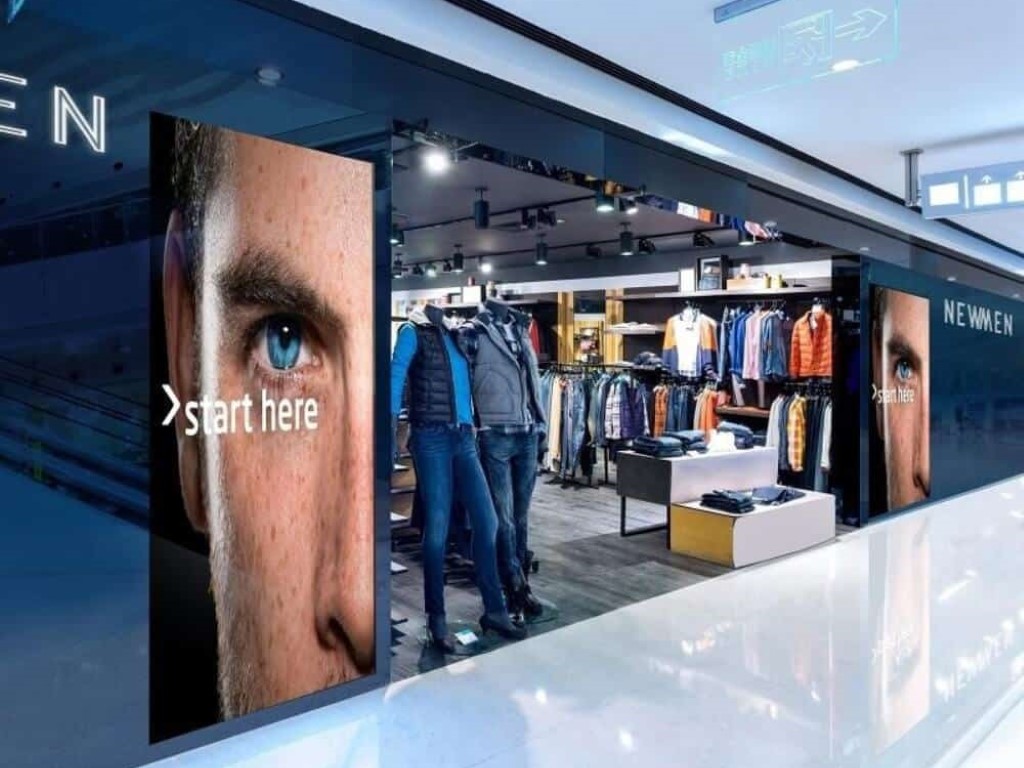
Digital signage hardware includes digital displays, digital media players, projectors, and audio systems.
Digital signage screens come in various sizes, resolutions, brightness, and support for interaction. Examples include LCD/LED flat panels, projection screens, touchscreens, and more. These display systems can be connected to digital media players, which contain the operating system and software applications used to run digital signage content. Some digital media players can be installed into the rear of a display or mounted externally on walls or stands with specialized brackets. Some displays are all-in-one, embedding the processor and supporting infrastructure, and do not need an external media player.
The digital signage network can also be enhanced by other hardware such as environmental sensors; consoles for user input (keypad, mouse); printers; modems; cameras; readers (RFID/NFC); WiFi routers; digital signage enclosures for outdoor installation and security; digital-to-analog converters (DACs); digital audio streaming devices; and more.
Interactive Digital Signage Hardware
Let’s focus on the interactive aspect of the hardware for a bit. Multi-touch displays are the most popular form of interactive digital signage hardware. These multi-touch screens enable users to interact with content simply by touching the display. The user intent could be to access information, play games, or complete transactions such as payments.
Other interactive modalities include sensors for motion or gesture, computer vision for gender and age recognition, voice to enable control through speech, and RFID readers that detect physical items and provide additional information about them. These technologies can deeply enhance engagement and increase usage, such as in retail stores where customers can get more information about products when they scan them using an RFID reader or touch a screen with a specific item for extra details.
Overall, interactive digital signage hardware enables businesses to engage their customers in meaningful ways while collecting data – in the context of the interaction – that can be used to gain valuable business insights. The right hardware can make a big difference in how effective and engaging a solution is for your customers. Digital signage hardware should not only be chosen for its functionality but also for its aesthetic appeal. It is an extension of your brand, after all!
What is digital signage software?
What is digital signage software? If you’ve ever googled “digital signage software” and paid attention to what those countless vendors offer, you’ve probably felt that they all seem to be talking about the same thing. Truth be told, it is not easy to give an overarching definition of Digital Signage Software because many software options offer different extents of capabilities and therefore are suitable for different purposes.
However, we can compromise by describing what an ideal digital signage software solution would look like. Digital sign software should enable its users to easily create digital signage experiences with the option of incorporating interactivity, integration of hardware and third-party services, and data collection for analytics. It should offer total freedom for multimedia format selection and permit any design, layout, or storyboard. It should facilitate collaboration and remote deployment.
Broadly speaking, digital Signage software is comprised of four primary functions:
- Content Creation
- Content Management and Distribution
- Device/Player Management
- Performance Measurement
What is the future of digital signage software?
Today, signage innovation is primarily occurring in the world of software. Here are three areas to watch for.
Digital signage is evolving rapidly. Software is what continues to drive innovation and what will ultimately shape the future of digital signage. As the technology progresses, expect to see increased interactivity, connectivity with other systems, and the use of digital experiences as a sensor. All these benefits create more powerful opportunities for businesses to deliver unique experiences that engage customers while gathering valuable data points. This is what’s ahead in digital signage software – an exciting time that promises breakthrough capabilities and insights into what consumers truly want.






